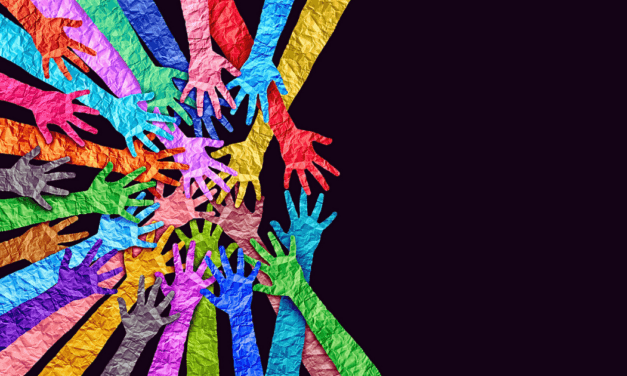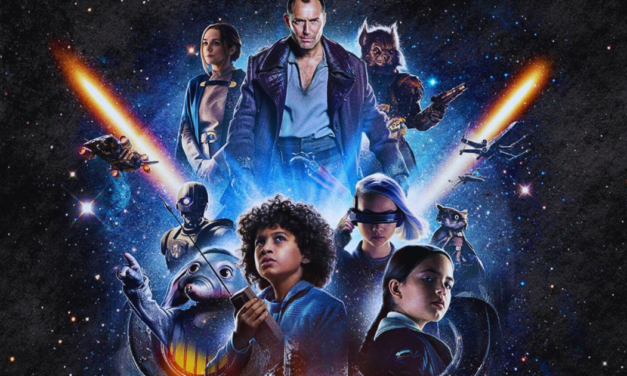This article first appeared in the Christian Research Journal, Winter (1997). For further information or to subscribe to the Christian Research Journal go to: http://www.equip.org/christian-research-journal/
SUMMARY
Spiritual explorers are increasingly looking to cyberspace to meet the needs of the soul. Many neopagans, occultists, and New Agers deem the technologies of cyberspace as fitting media for their magical experiments and rituals and view the Internet as a mystical plane of being. For some in this movement, which has roots in the counterculture of the sixties, both hallucinogenic drugs and computers help to demonstrate that reality is strictly a matter of our own perception and therefore can be manipulated and even created. However, this enthusiasm for the mystical potential of human technology is misplaced, illogical, and spiritually dangerous. It vainly attempts to build a spiritual reality on the faulty foundation of silicon, instead of on Jesus Christ.
Cyberspace is the hot contemporary term for computer-mediated communication, the burgeoning new world of e-mail, databases, virtual reality, word-processing, computer games, and a raft of culture-shaping, digital technologies. The backbone of cyberspace is the Internet, an international computer system linking individual computers through phone lines.
Being the incorrigibly spiritual creatures that humans made in God’s image are, many people are attempting to use cyberspace to feed and stretch the soul. A new movement is forming that views cyberspace as a sacred realm for the expansion of consciousness. Working from neopagan, occult, and New Age assumptions, technoshamans claim they are the wired wizards of the digital world (shamanism and technoshamanism will be defined in detail later). As this strange phenomenon unfolds, Christians need to address it theologically and biblically if we are to reach today’s technological culture effectively with the message of Jesus Christ.
TIMOTHY LEARY AND GENERATION X
Timothy Leary is dead, but he lives on in cyberspace. On the Internet, the Timothy Leary home page explains: “Just after midnight, in his favorite bed among loving friends, Timothy Leary peacefully passed on. His lasts words were ‘why not?’ and ‘yeah.’” Leary, who had been terminally ill for several months, had considered committing suicide via a live feed through the Worldwide Web. Instead, Leary kept visitors at his site informed on his declining condition and philosophized freely about it, claiming he had no fear of death. In 1995 he had announced he was “thrilled” to learn he had terminal prostate cancer and remarked, “How you die is the most important thing you ever do. It’s the exit.”1 As Leary himself put it, he died a “designer death,” displayed in cyberspace for all to access.
In recent years, Leary’s emphasis moved from hallucinogenic drugs, which he never renounced, to the mind-expanding possibilities of cyberspace. The New York Times reported that in the weeks before his death Leary handled many interviews in order “to market his estate and its provision for the maintenance of his [Internet] Web site.”2
Although in his 70s, Leary attracted the attention not only of aging Grateful Deadheads, but of Generation X (or the Baby Busters) as well. His fame spread to both hippies and hackers, and the overlap between the two. Leary is featured prominently in Douglas Rushkoff’s offbeat manifesto, Cyberia: Life in the Trenches of Hyperspace.3 Rushkoff tells us that cyberians (the younger denizens of cyberspace) who use “drugs do not need to learn that reality is arbitrary and manipulable, or that the landscape of consciousness is broader than normal waking-state awareness suggests” because they have already learned these things from Leary and the psychedelic author Ken Kesey.4 Rushkoff, a 20-something guru for Generation X, eulogized Leary on Leary’s home page, saying, “Tim’s whole trip — from psychedelics to computers to designer dying — was to communicate the fact that people are capable of taking charge of their own brains, hearts, and spirits.”5
Leary’s later years were dedicated to leading the march into cyberspace as a zone for unlimited human potential. He believed virtual reality experiences and on-line communications could serve the same purposes as hallucinogenic drugs. Leary modified his famous credo of the 1960s, “Tune in, turn on, and drop out,” to “Turn on, boot up, and jack in,” and proclaimed that “PC [personal computing] is the LSD of the 1990s.”6 It was not an either/or for Leary; in a 1995 interview in the on-line magazine HotWired, he admitted to having taken LSD three months earlier.7
Leary and Rushkoff have further suggested that the 1960s’ psychedelic experimentation and interest in Eastern religions directly influenced the development of modern computers and cyberspace. According to Leary, Apple Computer cofounder, Steven Jobs, “went to India, took a lot of acid, [and] studied Buddhism,” while Bill Gates, cofounder of Microsoft, “was a big psychedelic person at Harvard.” Leary explained that “it makes perfect sense to me that if you activate your brain with psychedelic drugs, the only way you can describe it is electronically.”8 Rushkoff claims that “psychedelics are a given in Silicon Valley. They are as established as Intel, Stanford, marriage, or religion. The infrastructure has accommodated them.”9
CYBERSPACE AND THE COUNTERCULTURE
The continuing popularity of Leary and the countercultural ethos is not just a retrotrend or a dip into hippie nostalgia. Many of those advocating technoshamanism in one form or another are survivors from the sixties. Besides Leary, these include Stewart Brand, ex-hippie and editor of The Whole Earth Catalogue, and John Perry Barlow, lyricist for the Grateful Dead and an outspoken advocate of computer rights through the Electronic Frontiers Foundation, which he helped found.10
Many of the beliefs and sensibilities of the counterculture have made their way through the seventies and eighties and into much of the cyberculture of the nineties. The political rebellion and spiritual experimentation of the sixties counterculture tended to be ambivalent at best toward technology, with the exception of stereo sound systems and chemically synthesized drugs such as LSD. As cyberpunk science fiction writer Bruce Sterling quipped, “No counterculture Earth Mother gave us lysergic acid [LSD] — it came from a Sandoz lab.”11 But by and large, the countercultural rejection of Western culture brought into question the “military-industrial complex” and its animating technocracy.
Although opponents of technology are not extinct, the more common attitude has been to integrate and mystify new technologies into a nonmaterialistic and non-Christian world view. Mark Dery summarizes the marriage of cyberspace technologies to psychedelic orientation (cyberdelia) in this way: “Cyberdelia reconciles the transcendentalist impulses of sixties’ counterculture with the infomania of the nineties. As well, it nods in passing to the seventies, from which it borrows the millenarian mysticism of the New Age.”12
The mystification of technology loomed large in Rushkoff’s interview of Britt Welin, a follower of Terence McKenna. Heir-apparent of the Timothy Leary legacy, McKenna is prone to such metaphysically melodramatic utterances as, “I think every person who takes five or six grams of psilocybin mushrooms in silent darkness is probably on a par with Christ and Buddha, at least in terms of input.”13 Meanwhile, Britt Welin is both an acid head and a cyberspace explorer. She adopts the idea of “technoanimism” and urges people to “think of technology itself as an animistic dynamic that filters through the individual machines, being an over spirit to them — an animistic spirit that’s way beyond what humans are comprehending on their own level.”14 Welin claims that when one is on psychedelic drugs “and you tune into a cyberspace environment, you lose your parameters and you find yourself entirely within the electronic environment.”15 Welin’s husband, Ken, also strives for union with cyberspace. He says, “Our video-computer system’s set up to ease us into a level of intimacy where we can use it in a transparent sense” and “enter into a trance relationship with it.” It then “ends up having a spiritlike existence.”16
According to Erik Davis, the labyrinthine recesses of cyberspace, with its unfathomable complexities and strange potencies, “may soon appear to be as strangely sentient as the caves, lakes, and forests in which the first magicians glimpsed the gods.”17 To the sacred and mysterious natural spaces of unwired ancient animists we may now add the sacred and mysterious cyberspaces of the wired modern animists. Leary and a cowriter saw computers as fulfilling the goal of “magick” as defined by archoccultist Aleister Crowley: “The art and science of causing change to occur in conformity with our will.”18
THE NEW AGE DAWNS — AGAIN
The yearning for a New Age to spring from the divine depths of human consciousness is hardly new. It is an ancient aspiration, an occultic orientation to the divine, the world, and the self that sees them all as part of one ultimate reality.19 The new spin on the old view is the addition of cybertechnologies as significant aids in the process of self-discovery or even as the manifestation of the New Age itself. Some technovisionaries, such as John Perry Barlow, invoke the evolutionary scenario of French Jesuit thinker and paleontologist, Pierre Teilhard de Chardin, to ground their viewpoint.20 Teilhard saw evolution as the fundamental category for all existence. He used this model of reality, which he spiritualized, to transcend naturalism and to reinterpret all the foundational doctrines and symbols of the Christian faith. Instead of the literal second coming of Jesus at the end of the age, he predicted the emergence of the noosphere (or mind-sphere), a level of unified consciousness that would, in essence, make the entire planet divine. This “noogenesis” would eventuate in the Omega Point — the end of history and culmination of cosmic evolution.21
Teilhard died in obscurity in 1955, far before the cyberspace revolution, but various thinkers surmise that cyberspace is the noosphere, believing that Teilhard may have had some inkling of the technologies to come.22 Barlow sees the eventual coming of a Cosmic Mind presaged even in something as pedestrian as e-mail: “Watching e-mail messages come and go can give you a holy sense of mission. It’s synaptic firing, across the web of a slowly evolving nervous system. In a couple of hundred years, every synapse on this planet will be continuously and seamlessly connected to every other synapse on the planet. One great wad of mind.”23
Jean Houston, a New Age consciousness researcher and spiritual advisor to Hillary Clinton, said she frequently uses the Internet to converse with Green parties around the world as well as to indulge in the fantasy role-playing game, Dungeons and Dragons. “It’s an extraordinary confluence of consciousness. Teilhard’s noosphere is alive and well.”24
SHAMANS WITH MODEMS
Whether or not this “extraordinary confluence of consciousness” in cyberspace is identified with the noosphere, a raft of technopagans are tapping into cyberspace as a realm for mystical discovery, magical powers, and evolutionary advancement. The use of cyberspace for these ends is often called technoshamanism.
Technoshamanism, in all its permutations, is more than the latest fad from San Francisco — although a high concentration of such activity is located there. While not an organized movement, it represents a growing cultural trend to deify cyberspace. The tribal shaman of ancient, pagan religions was a mediator between the spiritual and material worlds, who experienced mystical ecstasies and initiated others into the same communion with higher powers.25 Technoshamanism eliminates the middleman — although it is not without visionaries, philosophers, and programmers — and offers mystical connections in cyberspace possible to everyone with a modem. Anyone can be a (techno)shaman.
The essence of technoshamanism may be summarized in this statement by a pagan practitioner: “May the astral plane be reborn in cyberspace.”26 In an extensive article on technopagans, Erik Davis sees parallels between the notion of magic as “the science of the imagination, the art of engineering consciousness and discovering the virtual forces that connect the mind-body with the physical world,” and “our dizzyingly digital environment” of cyberspace technologies involving on-line fantasy role-playing games and other new, mind-expanding devices.27 Technopagans believe these technologies can serve as occultic sacraments in the digital age, because technopagans “honor technology as part of the circle of human life, a life that for Pagans is already divine.”28
Mark Pesce, a self-confessed technopagan, claims that both “cyberspace and magical space are purely manifest in the imagination. Both spaces are entirely constructed by your thoughts and beliefs.”29 The pantheism–animism–polytheism mix is expressed when Pesce explains, “I think computers can be as sacred as we are, because they can embody our communication with each other and with the entities — the divine parts of ourselves — that we invoke in that space.”30 In his mind, cyberspace is pictured as “the computer equivalent of holography, in which every part of a fragment represents the greater whole.”31 Pesce later concluded that the Internet’s ability to form a myriad of electronic connections corresponds with the Eastern idea of the net of the Indian goddess Indra, in which each jewel reflects every other jewel.32 The analogy, however, is flawed, since every point in cyberspace does not connect with, let alone reflect, every other point.
Technopagans are also attracted to the idea of cybersex (simulated on-line sex) and gender morphing (assuming alternative sexual identities on-line). A woman named legba (sic), a witch, enjoys cybersex and morphing because “they can be intensely magical. It’s a very, very easy way of shapechanging.” Legba likens this to the traditional shamans, who she says are “between genders, or doubly gendered.” Moreover, “morphing and net.sex can have an intensity and unsettling effect on the psyche, one that enables the ecstatic state from which Pagan magic is done.”33
Another pagan, Tyagi Nagasiva, has “cobbled together his own mythic structures, divination systems, and rituals — an eclectic spirituality well suited to the Net’s culture of complex interaction.”34 Nagasiva engages in “chaos magic,” in which participants do not rigidly follow the occult tradition, but create their own rules or ignore them altogether, “spontaneously enacting rituals that break through fixed mental categories and evoke unknown — and often terrifying — entities and experiences.”35 He claims that most pagans get on-line to coordinate rituals they then practice in real life, whereas chaos magicians say, “Let’s do the ritual [itself] online.”36 Nagasiva inhabits this ritual space from four to six hours a day.
THE PROBLEM WITH DIGITAL DEITIES
Technoshamanism attempts to sacralize silicon, to find mystery in the works that our hands have made. Because of the influence of strange and sometimes wonderful computer technologies, those not availing themselves of God’s own revelation in Christ and the Scriptures will seek revelations as they can.37 Apart from God, where better to seek revelations than cyberspace? It’s as close as the keyboard and as esoteric as the Internet. It can be as engrossing as any technology in existence. Its mysteries beckon exploration and its potentials are not fully known. Through its massive connectivity it offers a kind of visio dei — a God’s-eye vision of endless data through the dimensions of cyberspace. This explains the aspiration of Jobe from the movie Lawnmower Man, who, having tasted the powers of computers, wanted to incorporate all knowledge into himself by becoming one with cyberspace. In his words, he would become a “cyber-Christ” (although in the end he acted more akin to a cyber-Satan).
Heim rightly comments, “Our love affair with computers, computer graphics, and computer networks runs deeper than aesthetic fascination and deeper than the play of the senses. We are searching for a home for the mind and heart….The world rendered as pure information not only fascinates our eyes and minds, but also captures our hearts. We feel augmented and empowered. Our hearts beat in the machines.”38 Of course, the same description can be given for any form of idolatry. As the Jewish philosopher Abraham Heschel commented, the existence of idols bears a perverse testimony to our need for the divine. If we will not accept the divine on its own terms, we will create fascinating and mystifying surrogates that take on a life of their own, becoming an entrancing mystery we cannot easily resist.39
In some ways, even the sacred grove seems tame compared with the technological wizardry of cyberspace environments. When we “turn on, log on, and jack in,” we feel linked to a larger reality that transcends the finitude and frailty of our off-line lives. Yet this reality is only virtual — the work of human minds and hands — however much it may absorb its practitioners into itself. It is a projection or extension of humanity, a medium for a myriad of messages. As such, it cannot grant final satisfaction to the soul.
THE DANGERS OF MAGIC AND THE OCCULT
Magic, unlike revealed religion, has always sought initiation into a higher state of consciousness in order to manipulate reality through the acquisition of arcane powers. The logic of magic is really one coping mechanism of fallen beings who perceive their insufficiency in a cursed world, yet who refuse to submit to either God’s personal rule or fate’s impersonal dominance. Magicians covet the power to create their own reality through spiritual technologies of all kinds — whether incantations, visualizations, rituals, or on-line environments. The goal is the attaining of power over an otherwise resistant reality that dooms us to degeneration, disease, and ultimately death. Magic attempts to undo the effects of the Fall apart from grace by attempting to conquer the effects of sin apart from the Savior. It seeks power from below instead of grace from above.40
Such occult power-mongering, either on-line or off-line, is nothing less than rebellion against the Creator and an invitation to the dark powers that masquerade as light, whether or not the magicians believe in Satan and demons. God’s prohibition of magic and the occult flows from a jealous love for His creatures.41 Since the eternal and uncreated God is the source of all value, meaning, and excellence, any defection from His divine counsel results in alienation from His benefits. Into this void rushes the counterfeit of a deified creation, pressed into a spiritual service it cannot discharge — the salvation of the soul. Given the spiritual impotence of the creation to save itself, the demonic world finds its opportunity to pose as divine, offering a “counterfeit infinity” in place of the true God.42 Paul warned that “Satan himself masquerades as an angel of light” (2 Cor. 11:14), and Jesus admonished us to remember that the devil “is a liar and the father of lies” (John 8:44).
Although cyberspace technologies in themselves need not be demonic, they easily become conduits of deception and distortion when appropriated by the pagan practitioner, since their simulations are so seductive and their magnetism is so compelling. Because such technologies facilitate the construction of artificial environments, they can be a particularly powerful tool in the hands of cybermagicians who long to “create their own reality” one way or another.
Earlier quotes by technopagans referred to unspecified “entities” contacted through cyberrituals. This does not describe human participants, but spiritual beings. Through the centuries occultists have used visualization, drugs, and meditation to contact creatures otherwise aloof and invisible. In light of the imaginative occult environs frequented by technopagans in cyberspace, it would be no surprise if this medium should attract less than angelic agents, who, like opportunistic infections, will exploit any opening they can find.43 Rushkoff speaks of a technopagan named Green Fire who worries that his cyberspiritual adventures “could lead me to a place that I wouldn’t want to be. It’s like a puzzle or a maze and I could get lost.” Green Fire warns, “Magic is a dangerous thing. There is a new age belief that you can never get hurt; that’s not true. You can get hurt very bad.”44 This echoes the testimonies of many who have been burned by the occult. It is neither tame nor good.
UNMASKING THE PSYCHEDELIC APOLOGETIC
Leary and Rushkoff have claimed that some who used hallucinogenic drugs were also inspired to create advanced computer technologies. They also have contended that the combination of cyberspace exploration and the ongoing use of hallucinogens is crucial to awakening a higher consciousness that will be instrumental in bringing down the oppressive, dominant society and building a better one. This apologetic is more virtual than real for several reasons.
First, although some superstars such as Bill Gates and Steven Jobs may have used LSD and become technological innovators, this fails to establish either that LSD was the cause of their intellectual breakthroughs or that most people who ingest hallucinogenic drugs would have similar experiences. Gates and Jobs are both highly intelligent people, who probably would have come up with their ideas with or without hallucinogens. In any event, it would be very difficult to prove that mind-altering drugs were the cause for their success. A visit to People’s Park in Berkeley, California, will reveal any number of acid heads whose trips led them to homelessness and insanity and not to the forefront of cyberspace.
Second, even if for the sake of argument we granted that the use of hallucinogenic drugs was instrumental in the computer revolution, this would not prove that the computer revolution is an unmitigated good or that the world view generated by hallucinogenic drugs is true. The technologies created by the likes of Jobs and Gates are not cornucopias of pure blessing. There is a dark side to them that is all too often ignored in the bright lights of cyberculture (e.g., the emergence and easy accessibility of “cyberporn”).
Moreover, various experiences can produce beliefs that “work” or are “successful,” yet do not truly correspond to reality. Someone may believe she misplaced five hundred dollars because of carelessness. She then reforms her life and becomes an affluent businesswoman. The idea that she lost the money “worked” for her. Yet, as she learns later, the money was stolen, not misplaced. Her belief, then, was false, even if it was beneficial.45 Similarly, a hallucinogenic experience might be credited for some discovery in computer technology, but this, in itself, does not establish the truth of monism, pantheism, animism, or polytheism — world views that often (but not always) come through these experiences.
We should consider a key difference in terminology. While technopagans prefer the word psychedelic, the term hallucinogenic for the same drugs is more appropriate. A hallucinogen is understood to be a drug that induces a hallucination — an essentially deceptive experience that seems very real. The assumption behind this term is that our normal thought processes and sensory capacities are better guides to objective reality than a chemically induced experience, because the artificially altered mind is not necessarily the illuminated mind. A psychedelic drug, on the other hand, is believed to intensify sensory perception, ostensibly revealing a reality that was previously unknown or unexperienced without the aid of the chemical catalyst; it is mind-expanding, not just mind-altering.46 Each term is heavily weighted with philosophical assumptions.
Historically, the use of drugs for purposes of religious enlightenment has been associated with religions outside of Christianity and monotheism. The assumption behind the use of psychedelics is that through a transformation of consciousness one can — without divine mediation or revelation — directly intuit the mysteries of the cosmos. Christianity teaches that, since humans are both finite and fallen, they have no such capacities — either on or off drugs. As Paul confessed, “For there is one God; there is also one mediator between God and humankind, Christ Jesus, himself human who gave himself a ransom for all” (1 Tim. 2:5-6, NRSV).
TECHNOSHAMANISM AGAINST MONOTHEISM
The world view of technoshamanism tends toward pantheistic monism, animism, and polytheism. Pantheistic monism is the most natural platform for all occultism because it affirms that we are ultimately one with the one divine reality and have recourse to its powers through psychic techniques. Within this system, however, a variety of entities or energies are recognized as emanations or manifestations of the one reality. Hence, a kind of operational animism or polytheism is the cousin of pantheistic monism, however illogical it may be to introduce a multiplicity of entities into an absolute unity.
Tal Brooke, a writer on new religious movements, believes that cyberspace “by its very unitive structure, tends toward a kind of functional pantheism.”47 This seems to be the case for many who are already inclined toward the occult to various degrees, but cyberspace by nature does not demand a monistic interpretation. Christians should see cyberspace as a communications medium that shapes its contents in a bewildering variety of ways and so affects our selves and our culture. Our orientation toward the medium is crucial.
Leary and his cohorts have long despised monotheism, Christian or otherwise. In 1980 I heard Timothy Leary deliver a lecture (if one could so dignify it) in which he referred to the Judeo-Christian God as “the hanging judge God,” who must be denied, because “reality is no larger than your mind.” This kind of exuberant blasphemy, coupled with a romantic solipsism, is evident in the reincarnations of Leary’s views, expressed in Rushkoff’s description of the cyberians.
The cyberian world view is shaped by the sensibilities of modern technologies, particularly those of cyberspace. Rushkoff asserts, “According to cyberian logic, the grids of reality are creations. They are not necessarily real….Anyone who has taken a psychedelic drug experiences this. Fantasy gamers play with this. Hackers who crack the ‘ice’ of well-protected computer networks prove this. Anyone who has adopted the cyberian vision lives this.”48 Rushkoff adds that cyberians rebel against dominant society not by crossing lines and breaking out of boxes, but by refusing to grant the reality of any lines or boxes. “The exploitation of these lines and boxes for fun is like playing hopscotch on the tablets of the Ten Commandments.”49 God as Lawgiver is off the screen.
AFTER TRUTH, NOTHING
Modern technopagans tend to be less awed than their ancient ancestors by the ultimate mysteries of the cosmos, because they have, in good postmodernist fashion, abandoned the classic conception of truth and are simply playing with various contortions of consciousness. This assumption permeates Rushkoff’s account of the cyberian world view. Experiencing cyberspace and hallucinogens frees us from the tyranny of objective reality, meaning, and logic. Cyberians “have abandoned organized rules of logic in favor of reality hacking — riding the waves, watching for trends, keeping an open mind, and staying connected to the flow.”50 By “reality hacking,” Rushkoff means viewing life as a game to be played according to one’s own rules: “Once all templates or characters become interchangeable, the gamer can ‘infer’ reality, because he has the ability to see it from any point of view he chooses.”51 The arbitrarily arranged rules of the computer game serve as a model of the universe at large. You make it up as you go along.
Reality hacking and the desire for a designer reality spun out of one’s own head (via the proper hardware and software) rule out the notion of any fixed, final, and authoritative conception of reality. Reality moves from the objective singular to the subjective plural: there are many realities; hack the one you want. Yet in the same breath, Rushkoff’s cyberians and technopagans speak of reality as One (monism) and the divine as universally dispersed in everything (pantheism). They also sound animistic or polytheistic when they speak of particular spirits inhabiting computers. Rushkoff even appeals to avant-garde theories in science for rational justification of his world view. In so doing, he contradicts himself, since he also says that there is “no such thing as nonfiction, only points of view.”52
Reality hacking without belief in an objective reality that can be reached hollows out any claim of possessing a coherent, intellectually superior world view. It leaves only the rattling shells of arbitrary assertions. This high-tech relativism really boils down to a very noisy, cybercharged nihilism, which employs mystical and magical terms to obscure its inner bankruptcy. This deception is what Francis Schaeffer called “semantic mysticism.” Positive and engaging terms are used to cover up the emptiness of the world view itself.53
Furthermore, if the technoshamanistic world view rejects any absolute moral authority by opting for relativism, it unleashes an amoral anarchy impossible to restrain by the resources of its own thought. Technopagans may enjoy “playing hopscotch on the Ten Commandants,” as Rushkoff says, but they will offer passionate protest when someone sends a hard-disc-eating virus into their new computer system or pirates their software. Similarly, they morally object to the supposedly oppressive and dogmatic views of conservative Christians.
Such moral indignation has no foundation, given their world view. It consists of mere assertions. Having abandoned logic as a test for truth, they are left with no reliable criteria for deciding which wave to surf or which trend to follow. How about hacking the neo-Nazi version of paganism (which is resurgent in Germany and elsewhere), or being open-minded about joining the ranks of the sexual predators who easily and happily move from virtual rape to the flesh-and-bone variety? Without recourse to a moral law above their own consciousness, without a transcendent standard for ethical evaluation, all moral protest or prescription must philosophically obliterate itself.
The domain of cyberspace does not in itself demand a descent into the high-tech deceptions of technoshamanism. However, given the combined influence of the bewitching nature of cyberspace and the occult ideas thick in the cultural atmosphere, technoshamanism easily finds itself at home in the keyboards of its devotees and beyond. Nevertheless, the soul will find neither rest nor wisdom there. Jaron Lanier, a pioneer in virtual reality technologies, sums it up: “The Internet exists for people to connect with each other. But to connect with the mystery of the universe, the Internet won’t do. God doesn’t have a Web site.”54
As we have seen, whatever enticements it offers, technoshamanism suffers from an internally inconsistent and ultimately unlivable world view. As Scripture affirms, “Unless the Lord builds the house, its builders labor in vain” (Ps. 127:1). Jesus also taught that those who live by His teachings build their house on a rock that can withstand the vicissitudes of life, while those who fail to obey build only on shifting sand (Matt. 7:24-27). Erecting a world view upon silicon is no better than building it on sand.
Douglas Groothuis, Ph.D., is Assistant Professor of Philosophy of Religion and Ethics at Denver Seminary and the author of five books.
NOTES
- Quoted in Steven Daly and Nathanial Wice, alt.culture: an a-t-z guide to the 90s — underground, online, and over-the-counter (New York: HarperPerennial, 1995), 130.
- Steve Ditlea, “Leary’s Final Trip, the Web, Realized His Multimedia Vision,” New York Times, 1 June 1996, on-line documentation.
- Douglas Rushkoff, Cyberia: Life in the Trenches of Hyperspace (New York: HarperCollins, 1994), 44-45, 49-50, 57, 61, 66, 132-33, 211, 229.
- Ibid., 61.
- Douglas Rushkoff, “Life at Tim’s, after Tim,” Timothy Leary’s home page.
- See Mark Dery, Escape Velocity (New York: Grove Press, 1995), 22.
- “Timothy Leary Transcript,” Club Wired, HotWired (95-08-10), on-line documentation.
- Quoted in Dery, 28.
- Rushkoff, Cyberia, 30.
- See Dery, 22.
- Bruce Sterling, preface to Mirrorshades: The Cyberpunk Anthology, ed. Bruce Sterling (New York: Ace, 1991), xiii; quoted in Dery, 25.
- Dery, 22.
- Quoted in Rushkoff, Cyberia, 58.
- Ibid., 187.
- Ibid.
- Ibid.
- Eric Davis, “Technopagans,” Wired, July 1995, 176.
- Timothy Leary and Eric Gullicsen, “High-Tech Paganism-Digital Polytheism” (n.d.), Timothy Leary home page.
- On the New Age movement, see Douglas Groothuis, Unmasking the New Age: Is There a New Religious Movement Trying to Transform Society? (Downers Grove, IL: InterVarsity Press, 1986), Confronting the New Age (Downers Grove, IL: InterVarsity Press, 1988), and Jesus in an Age of Controversy (Eugene, OR: Harvest House, 1996).
- See Jeff Zaleski, “Cyberspirit,” Yoga Journal, March/April 1996, 69.
- For more on Teilhard de Chardin, see Tal Brooke, “Preparing for the Cosmic Millennium and the Coming Global Church,” Spiritual Counterfeits Project Journal 19, nos. 2-3 (1995): 4-17.
- This is argued in a favorable article by John R. Mabry, “Cyberspace and the Dream of Teilhard de Chardin,” Creation Spirituality, Summer 1994, 25.
- Quoted in Spencer Reiss, “Is He the Net’s Thomas Jefferson? John Perry Barlow on Tour,” Yahoo! Internet Life, July-August 1996, 113.
- David Jay Brown and Rebecca McClen Novick, “Forging the Possible Human with Jean Houston,” Voices from the Edge, ed. David Jay Brown and Rebecca McClen Novick (Freedom, CA: The Freedom Press, 1995), 246.
- For more on shamanism, see Groothuis, Unmasking, 137; and Groothuis, Jesus, 242-43.
- Davis, 174.
- Ibid., 128.
- Ibid.
- Ibid.
- Ibid.
- Ibid., 131.
- Indra’s net and its relationship to claims in New Age scientific thought is analyzed in Groothuis, Unmasking, 98-109.
- Davis, 180.
- Ibid., 178.
- Ibid.
- Ibid.
- On this theme, see Douglas Groothuis, Christianity That Counts: Being a Christian in a Non-Christian World (Grand Rapids: Baker Books, 1994), 102-5.
- Michael Heim, The Metaphysics of Virtual Reality (New York: Oxford University Press, 1994), 85.
- Abraham Heschel, Man Is Not Alone: A Philosophy of Religion (New York: Farrar, Straus, and Giroux, 1951), 33-34.
- See Rousas John Rushdoony, “Power from Below,” The Journal of Christian Reconstruction 1, 2 (Winter 1974): 7-10.
- See Deuteronomy 18:10-12.
- “The Counterfeit Infinity” is a chapter title from Os Guinness, The Dust of Death: The Sixties Counterculture and How It Changed America Forever (Wheaton, IL: Crossway Books, 1994), 235-74.
- On the dangers of occult involvement, see Groothuis, Confronting the New Age, 76-83.
- Rushkoff, Cyberia, 148-49.
- See Winfried Corduan, Reasonable Faith (Nashville, TN: Broadman, Holman, 1993), 60-61.
- See R. C. Sproul, Not a Chance: The Myth of Chance in Modern Science and Cosmology (Grand Rapids: Baker Book House, 1994), 92-93, and Guinness, 238.
- Tal Brooke, “Cyberspace: Storming Digital Heaven,” SCP Journal 19:4-20:1 (1995): 16.
- Rushkoff, Cyberia, 205.
- Ibid.
- Ibid., 144.
- Ibid., 198.
- Ibid., ix.
- See Francis A. Schaeffer, The God Who Is There: Speaking Historic Christianity into the Twentieth Century (Downers Grove, IL: InterVarsity Press, 1976), 56-62.
- Quoted in Zaleski, 72.
GLOSSARY OF TERMS NOT DEFINED IN THE TEXT
acid head: enthusiastic and frequent user of LSD.
animism: world view claiming that various spirits inhabit and influence the world.
digital technologies: machinery that uses digital (or binary) systems, such as computers, CDs, and digital cameras.
Green parties: New Age/pagan political action groups emphasizing a pagan view of the environment.
hacker: computer wizard who uses his or her skills in a controversial or illegal way, such as getting into governmental computer systems.
hallucinogenic drugs: drugs, whether synthesized or natural, that alter brain chemistry to induce abnormal states of consciousness. Called psychedelic by those claiming the drugs reveal new realities.
home page: documentation and/or graphics available on an Internet site pertaining to a particular individual or group.
nihilism: world view that denies all meaning, value, and significance to reality.
polytheism: world view claiming that there are many finite deities. Denies monotheism (belief in one infinite-personal God).








